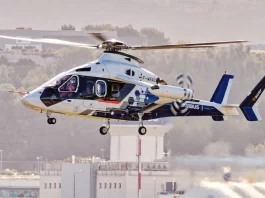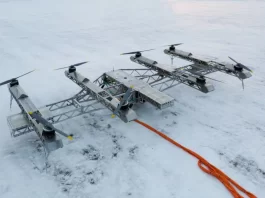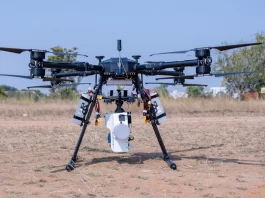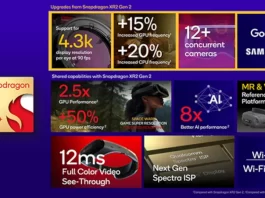Airbus Defense and Space and its wholly-owned subsidiary Airbus UpNext achieved fully autonomous guidance and control of a drone while in the air by using an A310 MRTT.
The technologies constitute a significant leap for future aerial operations involving manned and unmanned aircraft. They are the first step towards autonomous formation flight and autonomous air-to-air refuelling (A4R).
These cutting-edge technologies, “Made in Europe,” can potentially lessen the fatigue of crews and the likelihood of human errors while also minimising the costs associated with crew training and enhancing operations.
These technologies, collectively called Auto’Mate, were implemented on an A310 MRTT flying testbed that took off from Getafe, Spain, on March 21 and on several DT-25 target drones that operated as receiving aircraft and flew from the Arenosillo Test Centre (CEDEA) in Huelva, Spain.
The A310 MRTT took control of the drone over the waters of the Gulf of Cadiz after receiving control of it from a base station. The A310 MRTT then guided the DT-25 to the position where it could receive in-flight refuelling.
During the flight testing that lasted for close to six hours, artificial intelligence and cooperative control algorithms regulated and commanded the four progressively launched receivers without any human input. The A310 MRTT was kept at a minimum distance of 150 feet (approximately 45 metres) from the various receivers, which were steered and controlled to that distance.
Key takeaways
The Auto’Mate Demonstrator technology has succeeded in achieving three fundamentals.
The first one is precise relative navigation, which allows one to accurately estimate the relative position, speed, and attitudes of the tanker and the receiver.
The second is intra-Flight Communication between platforms permits information exchange between the many assets, which ultimately contributes to improving the system of systems’ degree of independence.
And lastly, Cooperative Control Algorithms are designed to offer the tanker and the receiver/s direction, coordination, consensus, and the ability to avoid collisions.
Enables teaming in 6th generation FCAS
These innovations, which were developed by a European team consisting of members from Spain, Germany, and France, will continue to widen the capability gap between themselves and their rivals while also being re-used in significant technological projects, such as the Future Combat Air System (FCAS), says the company release.
Plans
By the end of 2023, a second campaign is expected to be conducted to test autonomous formation flight navigation sensors based on artificial intelligence and updated algorithms. In addition, two simulated drones will fly close to the A310 MRTT to demonstrate autonomous multi-receiver operations and collision-avoidance algorithms.
According to Jean Brice Dumont, Head of Military Air Systems at Airbus Defence and Space, the accomplishment of this maiden flight test campaign paves the way for the future development of technologies that allow air-to-air refuelling to take place without the assistance of a human pilot. Although the firm is still in its early stages, it has fulfilled this goal in less than a year and is on track for manned-unmanned teaming and future air force operations, according to him. These operations will involve fighters and mission planes flying alongside swarms of drones.






